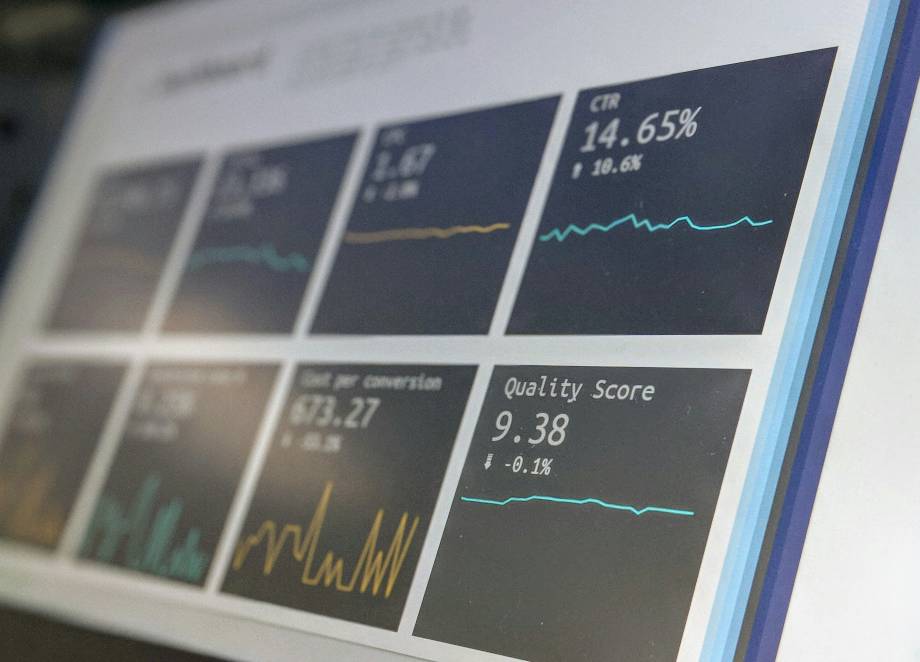Effective campaign design is the cornerstone of successful marketing strategies in today’s competitive market. Whether you’re a seasoned marketer or just starting out, understanding how to design a marketing campaign that resonates with your audience and achieves your goals is critical.
This comprehensive guide will walk you through the key elements of campaign design, providing practical tips and strategies to create impactful campaigns that drive results.
Understanding the Basics of Campaign Design
Before diving into the specifics of marketing campaign design, it’s important to grasp the fundamental concepts that underpin effective campaigns.
What Is Campaign Design?
Campaign design refers to planning, creating, and executing a coordinated series of marketing efforts to achieve specific business objectives. It involves developing a cohesive strategy aligning your message, visuals, and distribution channels to reach and engage your target audience effectively.
Why Is Campaign Design Important?
A well-designed campaign can:
- Increase brand awareness
- Drive customer engagement
- Generate leads and sales
- Improve customer loyalty
- Enhance brand positioning
Critical Components of Campaign Design
- Clear objectives
- Target audience definition
- Compelling message and creative elements
- Channel selection
- Timeline and budget
- Metrics for success
Steps to Design a Marketing Campaign
Now that we’ve covered the basics, let’s break down the process of designing a marketing campaign that delivers results.
1. Define Your Campaign Objectives
Start by clearly outlining what you want to achieve with your campaign. Your objectives should be SMART:
- Specific
- Measurable
- Achievable
- Relevant
- Time-bound
For example, instead of saying “increase sales,” a SMART objective would be “increase online sales of Product X by 20% within the next three months.”
2. Identify Your Target Audience
Understanding who you’re trying to reach is fundamental to campaign design. Develop detailed buyer personas that include:
- Demographics (age, gender, location, income)
- Psychographics (interests, values, lifestyle)
- Behaviors (purchasing habits, media consumption)
- Pain points and challenges
The more you know about your audience, the better you tailor your campaign to resonate with them.
3. Develop Your Campaign Message
Craft a compelling message that speaks directly to your target audience’s needs and desires. Your message should:
- Highlight your unique value proposition
- Address your audience’s pain points
- Be clear, concise, and memorable
- Align with your brand voice and values
4. Choose Your Campaign Channels
Select the marketing channels that best reach your target audience. Consider:
- Digital channels (social media, email, content marketing)
- Traditional channels (TV, radio, print)
- Out-of-home advertising (billboards, transit ads)
- Direct marketing (direct mail, telemarketing)
Your channel selection should be based on where your audience spends their time and how they prefer to consume information.
5. Create Your Campaign Assets
Develop the creative elements that will bring your campaign to life. This may include:
- Visual designs (logos, graphics, images)
- Copy (headlines, body text, calls-to-action)
- Video content
- Audio content (podcasts, radio spots)
- Landing pages and microsites
Ensure all assets are consistent with your brand guidelines and campaign message.
6. Set Your Campaign Timeline and Budget
Establish a realistic timeline for your campaign, including key milestones and launch dates. Allocate your budget across different channels and activities, ensuring you have sufficient resources to execute your plan effectively.
7. Implement and Monitor Your Campaign
Launch your campaign and closely monitor its performance. Use analytics tools to track key metrics such as:
- Reach and impressions
- Engagement rates
- Click-through rates
- Conversion rates
- Return on investment (ROI)
Be prepared to make real-time adjustments based on campaign performance data.
8. Evaluate and Iterate
After your campaign concludes, conduct a thorough analysis of its performance. Identify what worked well and areas for improvement. Use these insights to inform future campaign designs and refine your marketing strategy.
Advanced Strategies for Impactful Campaign Design
To take your marketing campaign design to the next level, consider incorporating these advanced strategies:
Personalization and Segmentation
Tailor your campaign messages and offers to specific segments of your audience. Use data-driven insights to create personalized experiences that resonate with individual preferences and behaviors.
Multi-Channel Integration
Design campaigns that seamlessly integrate across multiple channels, creating a cohesive brand experience. Ensure your message and visual elements are consistent across all touchpoints while optimizing for each platform’s strengths.
User-Generated Content
Incorporate user-generated content into your campaign design to build authenticity and trust. Encourage customers to share their experiences with your brand and feature their content in your campaign materials.
Influencer Partnerships
Collaborate with influencers who align with your brand values and strongly connect with your target audience. Integrate influencer content into your campaign strategy to extend your reach and credibility.
Interactive Elements
Engage your audience with interactive campaign elements such as quizzes, polls, contests, or augmented reality experiences. These can increase engagement and provide valuable data for future campaign designs.
Storytelling Techniques
Use compelling storytelling to create an emotional connection with your audience. Develop a narrative arc that captures attention, evokes emotions, and motivates action.
Common Pitfalls in Campaign Design (and How to Avoid Them)
Even experienced marketers can fall into traps when designing campaigns. Here are some common pitfalls to watch out for:
1. Lack of Focus
- Problem: Trying to achieve too many objectives or target too broad an audience.
- Solution: Prioritize your goals and narrow your target audience to create a more focused and effective campaign.
2. Inconsistent Messaging
- Problem: Conflicting or inconsistent messages across different campaign elements.
- Solution: Develop a clear campaign brief and ensure all team members and partners are aligned on the core message and visual identity.
3. Ignoring Data
- Problem: Relying on assumptions rather than data-driven insights.
- Solution: Market research, customer data, and performance analytics inform your campaign design decisions.
4. Poor Timing
- Problem: Launch campaigns at inopportune times or with unrealistic timelines.
- Solution: Consider seasonal trends, industry events, and your audience’s behavior patterns when planning your campaign timeline.
5. Neglecting Mobile Users
- Problem: Need to optimize campaign assets for mobile devices.
- Solution: Adopt a mobile-first approach to ensure your campaign looks great and functions well on smartphones and tablets.
6. Overlooking the Customer Journey
- Problem: Focusing solely on individual touchpoints rather than the overall customer experience.
- Solution: Map out the entire customer journey and design your campaign to seamlessly guide prospects through each stage.
Tools and Resources for Effective Campaign Design
To streamline your campaign design process and improve outcomes, consider utilizing these tools and resources:
Project Management Tools
- Trello
- Asana
- Monday.com
These platforms can help you organize tasks, collaborate with team members, and track campaign progress.
Design and Creative Tools
- Adobe Creative Suite
- Canva
- Figma
Use these tools to create professional-looking visuals and layouts for your campaign assets.
Analytics and Reporting Tools
- Google Analytics
- Mixpanel
- Hotjar
These platforms provide valuable insights into campaign performance and user behavior.
Marketing Automation Platforms
- HubSpot
- Marketo
- Mailchimp
Automate repetitive tasks and streamline your campaign execution with these powerful marketing tools.
Social Media Management Tools
- Hootsuite
- Sprout Social
- Buffer
Manage and schedule your social media content across multiple platforms with ease.
Measuring Campaign Success: Key Metrics to Track
To gauge the effectiveness of your campaign design, it’s critical to track the right metrics. Here are some key performance indicators (KPIs) to consider:
Awareness Metrics
- Reach
- Impressions
- Brand recall
Engagement Metrics
- Click-through rate (CTR)
- Social media engagement (likes, comments, shares)
- Time spent on site
Conversion Metrics
- Conversion rate
- Cost per acquisition (CPA)
- Return on ad spend (ROAS)
Customer Metrics
- Customer lifetime value (CLV)
- Net Promoter Score (NPS)
- Customer satisfaction (CSAT)
Financial Metrics
- Return on investment (ROI)
- Revenue growth
- Profit margin
Remember to align your metrics with your campaign objectives and regularly review and analyze your data to drive continuous improvement in your campaign design.
The Future of Campaign Design: Emerging Trends and Technologies
As technology evolves and consumer behavior shifts, the landscape of campaign design continues to change. Stay ahead of the curve by keeping an eye on these emerging trends:
Artificial Intelligence and Machine Learning
AI-powered tools are revolutionizing campaign design by:
- Predicting consumer behavior
- Optimizing ad placements and bids
- Personalizing content at scale
- Automating A/B testing
Voice Search Optimization
With the rise of smart speakers and voice assistants, optimizing your campaigns for voice search is becoming increasingly important. Consider:
- Using natural language in your content
- Targeting long-tail keywords and questions
- Creating voice-activated ads and skills
Virtual and Augmented Reality
Immersive technologies are opening up new possibilities for engaging campaign experiences:
- Virtual product try-ons
- AR-enhanced packaging and print materials
- 360-degree video content
Privacy-First Marketing
As data privacy regulations tighten, campaign designers need to prioritize user privacy:
- Implementing first-party data strategies
- Embracing contextual targeting
- Being transparent about data collection and usage
Sustainability and Social Responsibility
Consumers are increasingly drawn to brands that are committed to sustainability and social causes. Consider incorporating these elements into your campaign design:
- Highlighting eco-friendly products or practices
- Partnering with charitable organizations
- Showcasing your company’s social impact initiatives
Conclusion: Mastering the Art of Campaign Design
Creating impactful campaigns is both an art and a science. By following the principles and strategies outlined in this guide, you’ll be well-equipped to design marketing campaigns that capture attention, engage your audience, and drive meaningful results for your business.
Remember that effective campaign design is an iterative process. Continuously test, learn, and refine your approach based on data and feedback. Stay curious, stay creative, and don’t be afraid to push boundaries with your campaign ideas.















